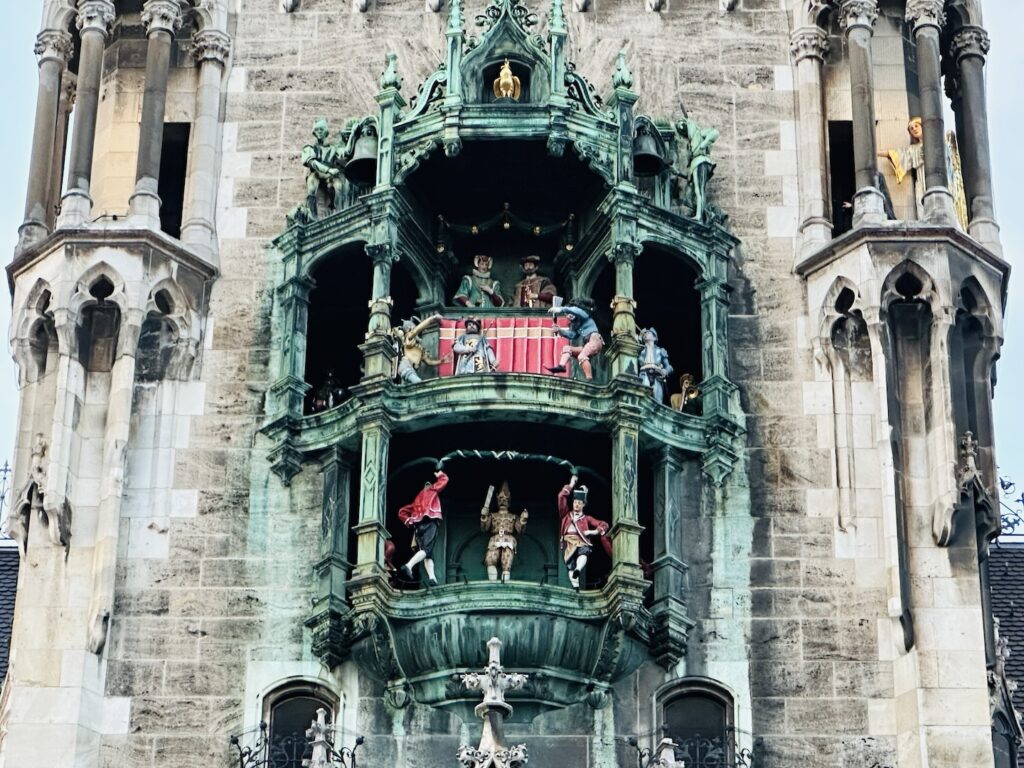Beautiful coastal Halifax, Nova Scotia, is steeped in maritime history and exudes a lively vibe today. Halifax has played key roles on both land and sea. Two pivotal events in the city’s history include the sinking of the Titanic in 1912 and the Halifax Explosion of 1917. The city has commemorated both events with museums, parks, and monuments. Today Halifax is a delight to visit because of its history, culture, museums, coastal scene, people, and food. My husband and I visited Halifax on a two-week trip to Nova Scotia and Prince Edward Island. This city was our starting point for a fun adventure exploring this unique eastern Canadian province.
More than a handful of universities call Halifax home, and the younger folks’ presence (and buying power) help to create the city’s stimulating scene. In addition, Halifax is a deep sea port that helped create a launching point during World War II convoys to the United Kingdom. That deep seaport also makes it a popular port of call for large cruise ships today.

A Brief History of Halifax
Halifax is the capital and largest city in the Atlantic Canadian province of Nova Scotia. British Lieutenant Colonel Edward Cornwallis and almost 1,200 settlers landed here in 1749 and quickly built fortifications to protect themselves and others loyal to the British crown. In the early 1800s, Halifax saw a lot of black-market activity from privateers who frequented the area. Later, the city’s economy transitioned to more of a legitimate mercantile focus.
Two key events near Halifax have contributed to the city’s history, and several key sites listed in this article are tied to that history.
Titanic Sinking of 1912
When the “unsinkable” Titanic descended into the depths of the Atlantic Ocean after hitting an iceberg, most of the dead were taken to Halifax. (Most of the survivors were sent to New York City.) Only 337 of the over 1,500 dead were recovered, and some recovered bodies were buried at sea. Once the bodies were on shore, officials created a system of numbering the bodies, noting any distinguishing features (like birthmarks), and personal effects (like monogrammed articles of clothing) that is still used today. Of the 209 bodies brought to Halifax, family members claimed 59, and the remaining 150 were buried in Halifax cemeteries (Fairview Lawn Cemetery, Mount Olivet Cemetery, and Baron de Hirsch Cemetery).
Halifax Explosion of 1917
On December 6, 1917, the SS Mont-Blanc, a French cargo ship filled with explosives heading to Europe in support of World War I, collided with the Norwegian ship SS Imo. The resulting massive explosion killed almost 1,800 people and injured about 9,000. Buildings were destroyed, trees toppled, and debris was scattered for several miles/kilometers. (You can visit the Mont Blanc anchor shaft, see below, that went airborne in the blast and landed 2.3 miles/3.7 kilometers away.)
The Halifax Explosion was the largest human-caused explosion at the time. Hundreds of medical personnel came from Boston and elsewhere with medical supplies. As a continuing way to thank Bostonians for their lifesaving assistance, Nova Scotia sends a 40-50 foot tall evergreen tree to Boston annually; the tree is decorated for Christmas and stands in Boston Common over the December holidays. The Halifax Explosion remains the largest non-nuclear man-made explosion (roughly half the size of the Hiroshima atomic bomb).
Top Things to Do and See in Halifax
1. Alexander Keith Brewery
1496 Lower Water Street | 902-455-1474
Founded in 1920, Alexander Keith is one of the oldest breweries on the continent. Book a tour online ahead of your visit to guarantee the day and time you want. You’ll learn a little about how they brew beer; learn more about Alexander Keith, the founder; enjoy some generous samples; and be entertained by the live music during your tasting. An upbeat, good time!
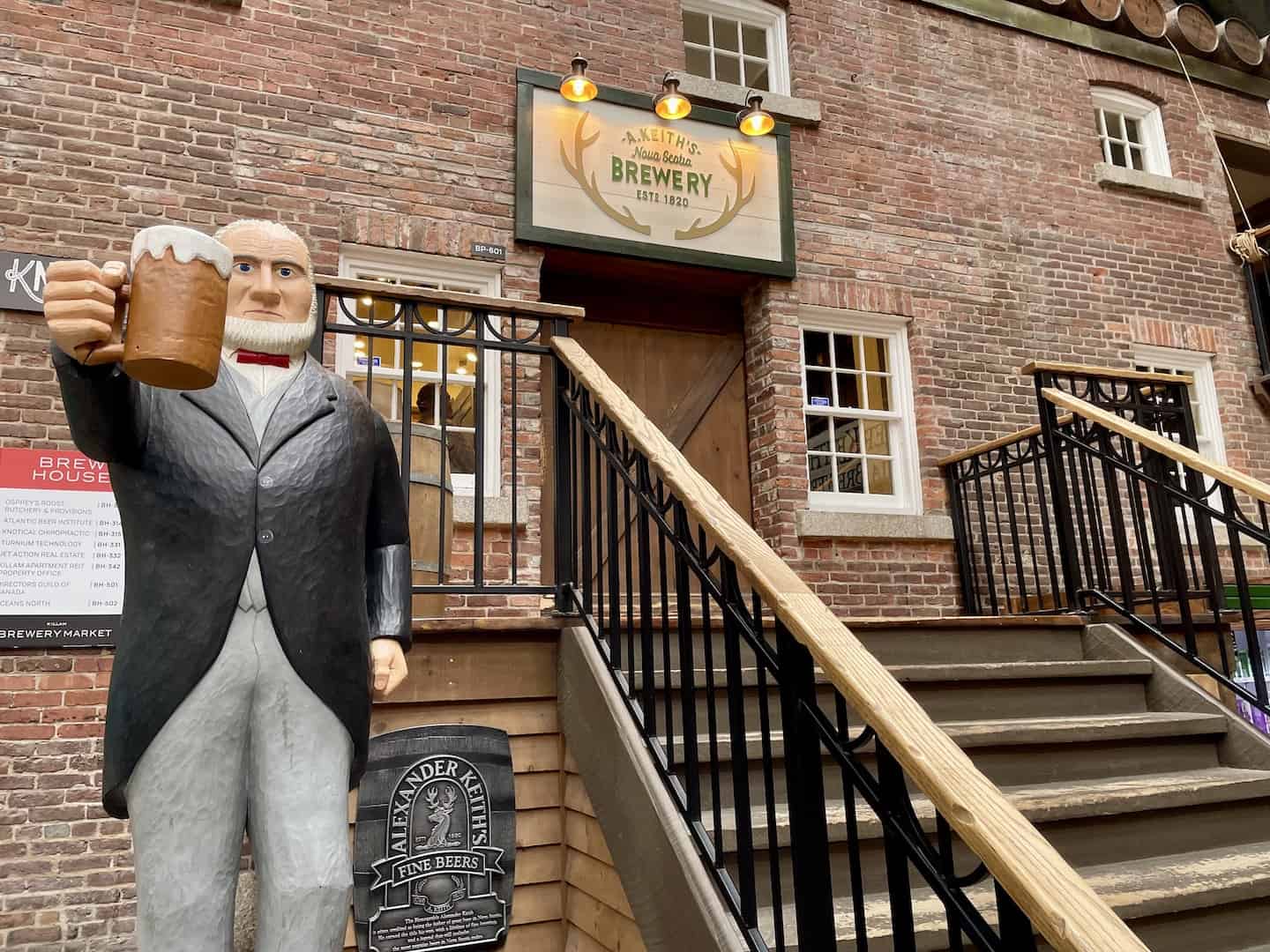
2. Boardwalk on the Waterfront
The Halifax boardwalk is 2.5 miles/4 kilometers long and hugs the harbor. It’s where you’ll find ferries, watercraft rentals, public art, museums, play areas, and a wide variety of restaurants, art galleries, shops, boutiques, and a historic World War I warship.
On the eastern end of the waterfront boardwalk are the Historic Properties (1869 Upper Water St), a collection of buildings that served mainly as warehouses in the late-1700s and early-1800s. Today these structures include national historic sites that have been repurposed to serve as restaurants, boutiques, and other businesses.
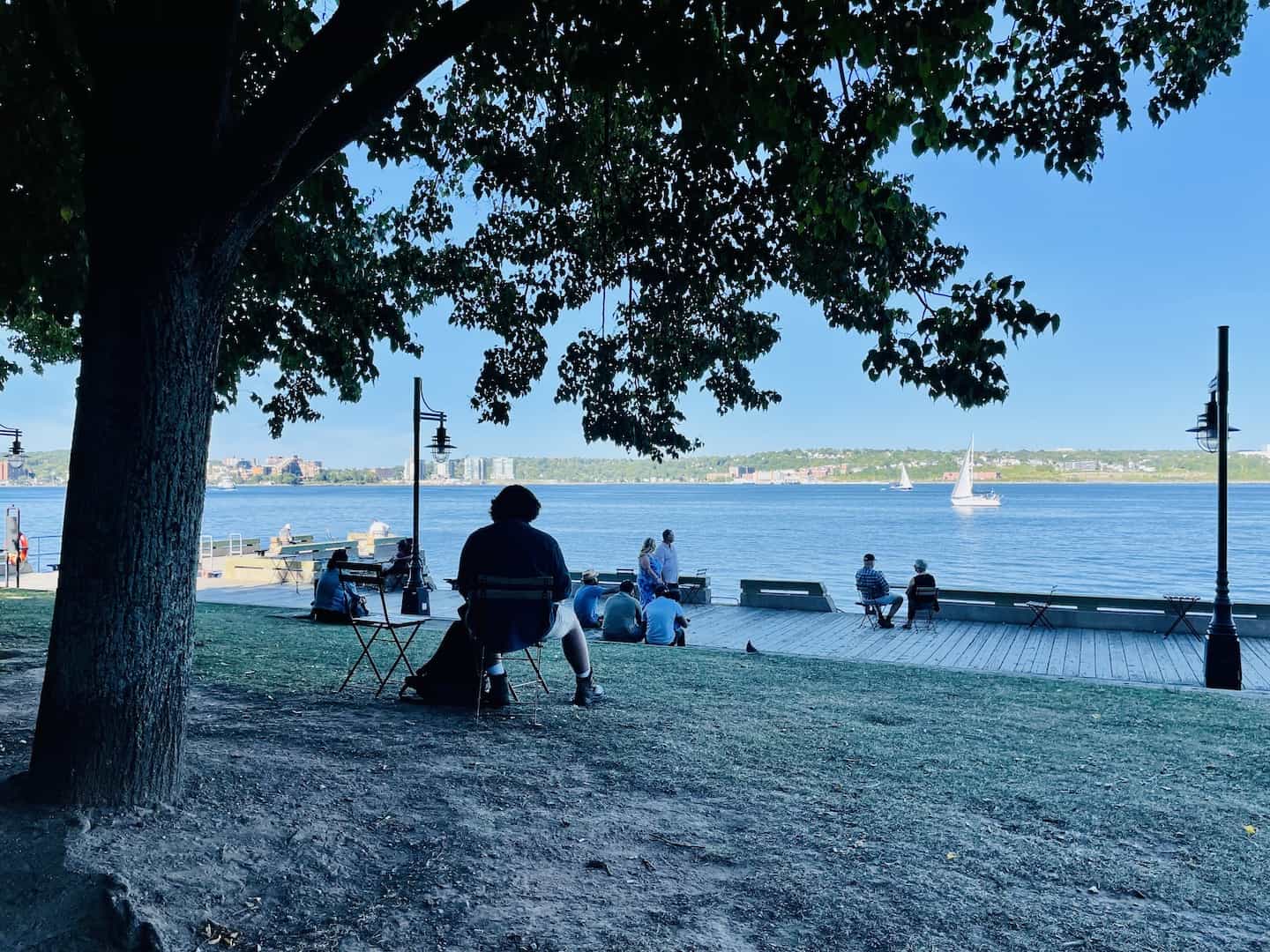
3. Canadian Museum of Immigration at Pier 21
1055 Marginal Road, Waterfront | 855-526-4721 (toll-free)
The Canadian Museum of Immigration at Pier 21 has exhibits, photographs, oral histories, and artifacts that help tell the continuing story of Canada’s immigrants. Many came through Pier 21 from 1928 to 1971. It also helps explain the immigrants’ joys and challenges as they settled in their new land, from coast to coast. The museum is open 7 days a week from May to October and it’s open Wednesday to Sunday from November to April.
4. Cemeteries with Titanic Victims
One hundred and fifty victims of the Titanic sinking were buried in Halifax in one of three cemeteries. Each has the date of death, April 12, 1912, along with a number that had been assigned to the body, and the victim’s name, if known. The three cemeteries are:
- Fairview Lawn Cemetery has 121 headstones of Titanic victims. This is a heavily visited site, perhaps because there are so many Titanic graves, and can be quite crowded at times. Location: 3720 Windsor Street
- Mount Olivet Cemetery holds 19 Roman Catholic Titanic victims. This cemetery is usually quiet and doesn’t see as many visitors as Fairview. In that respect, I think it is a good place to go to pay tribute to the victims and reflect on those lost to this disaster. Location: 7076 Mumford Road
- Baron de Hirsch Cemetery has 10 plots holding Jewish victims. This cemetery usually has restricted access. Location: 1480 Oxford Street

5. Fisherman’s Cove
4 Government Wharf Rd, Eastern Passage | 902-465-6093
Picturesque, historical Fisherman’s Cove is a restored fishing village, located about 20 minutes from downtown Halifax. Many visitors today come to walk the boardwalk and take in the colorful buildings that house shops and restaurants. Travel to Fisherman’s Cove by car, bus, or ferry. My husband and I enjoyed our time here while having lunch and strolling the small artisan shops. This is a low-key, quiet place that is a perfect break from busy sightseeing in Halifax.
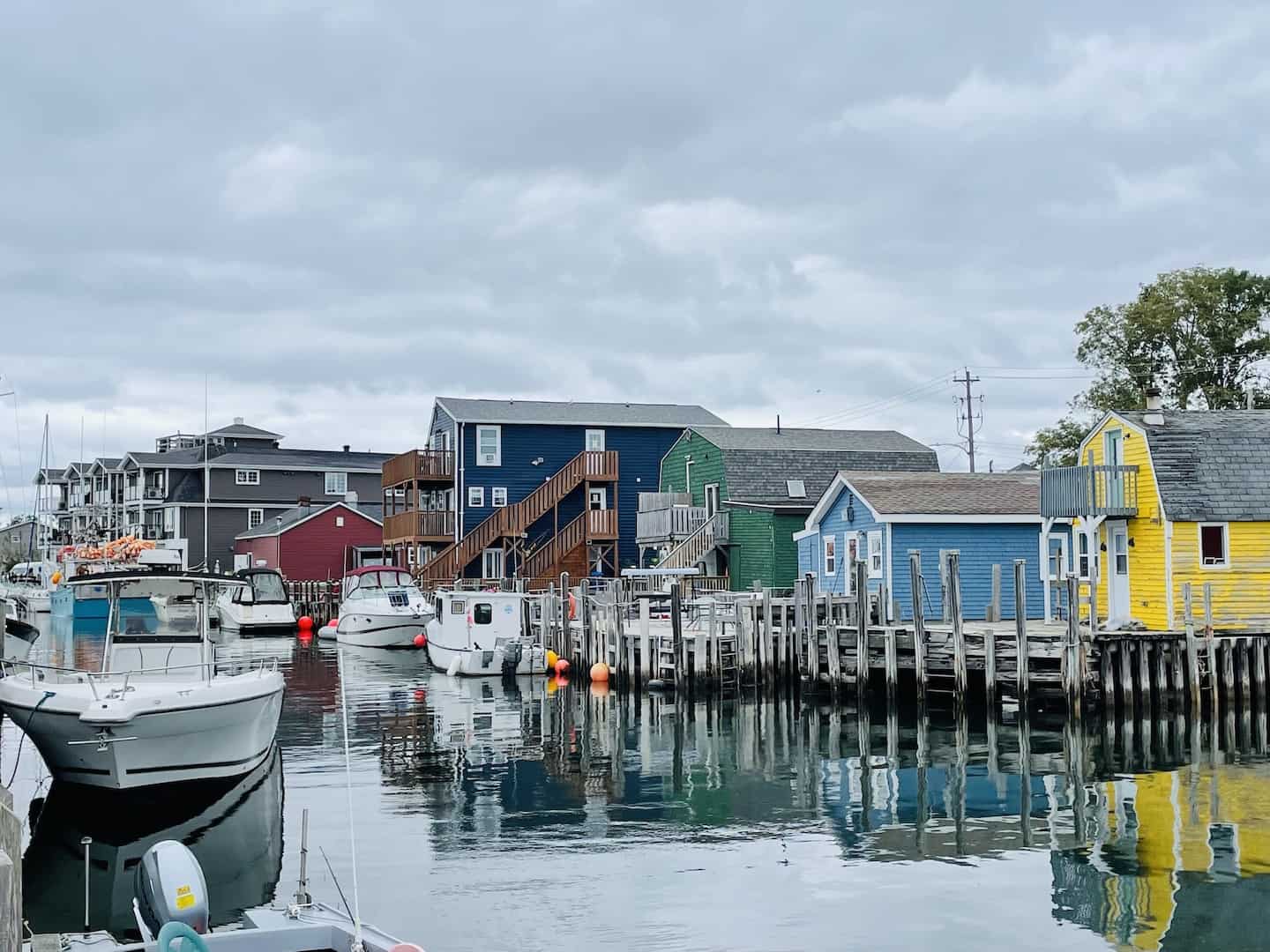
6. Halifax Explosion Memorial Bell Tower
5515 Stairs Place | 902-490-4633
The Halifax Explosion Memorial Tower in Fort Needham Memorial Park pays tribute to the almost 1,800 victims of the Halifax Explosion in 1917. Symbolism abounds in the memorial as each of the victims is memorialized in its design. A hero who arose from the tragedy was Vince Coleman, a train dispatcher, who saw the collision of the ships and realizing the potential for disaster, sent a warning to an approaching train to stop before reaching the city. His quick actions saved hundreds of lives. Vince Coleman, too, is memorialized at the bell tower along with the Morse Code message he sent to the train. (He is buried at Mount Olivet Cemetery, listed above.) Besides the tower, the park has a playground, a picnic area, and public restrooms/washrooms.
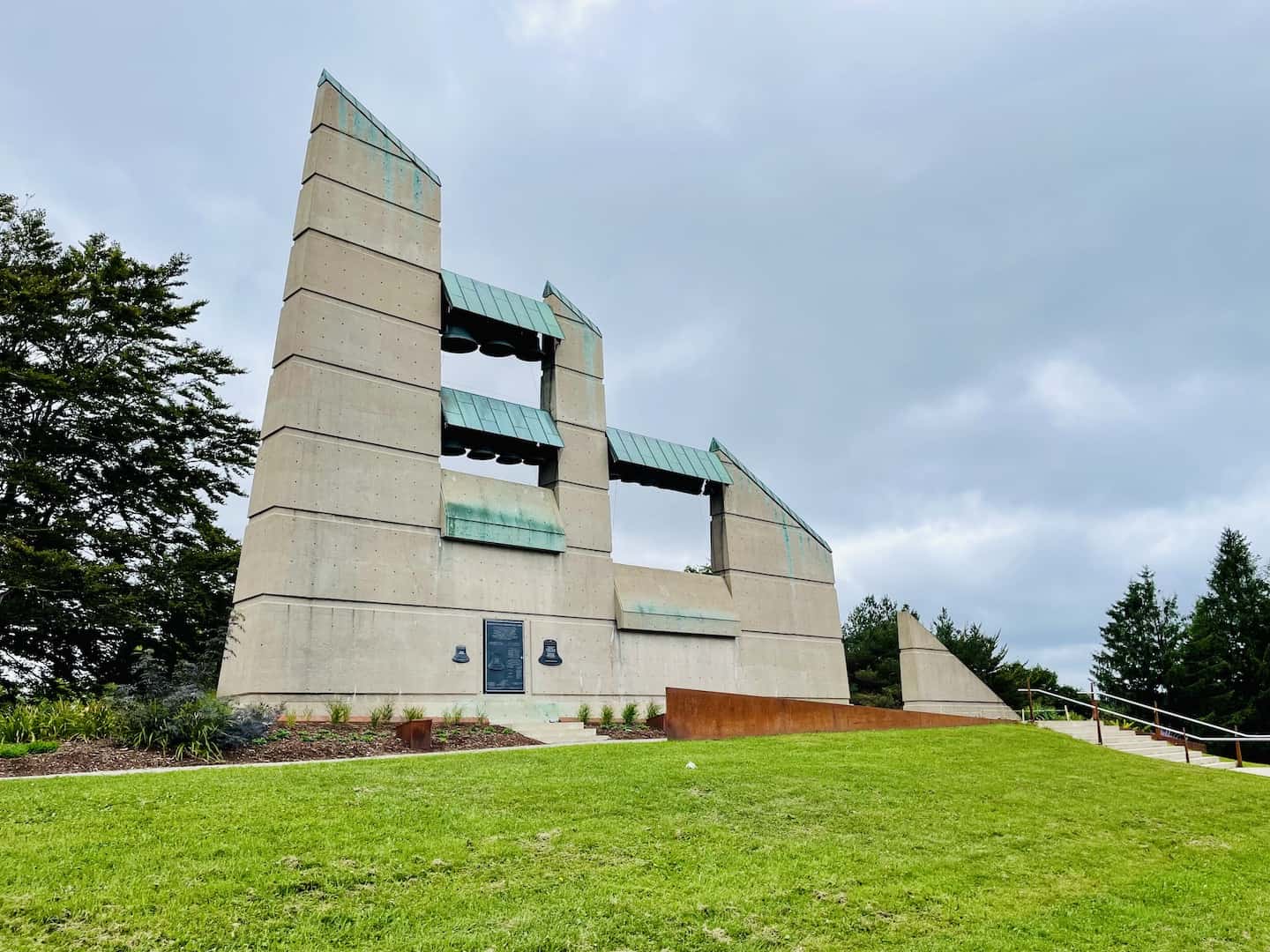
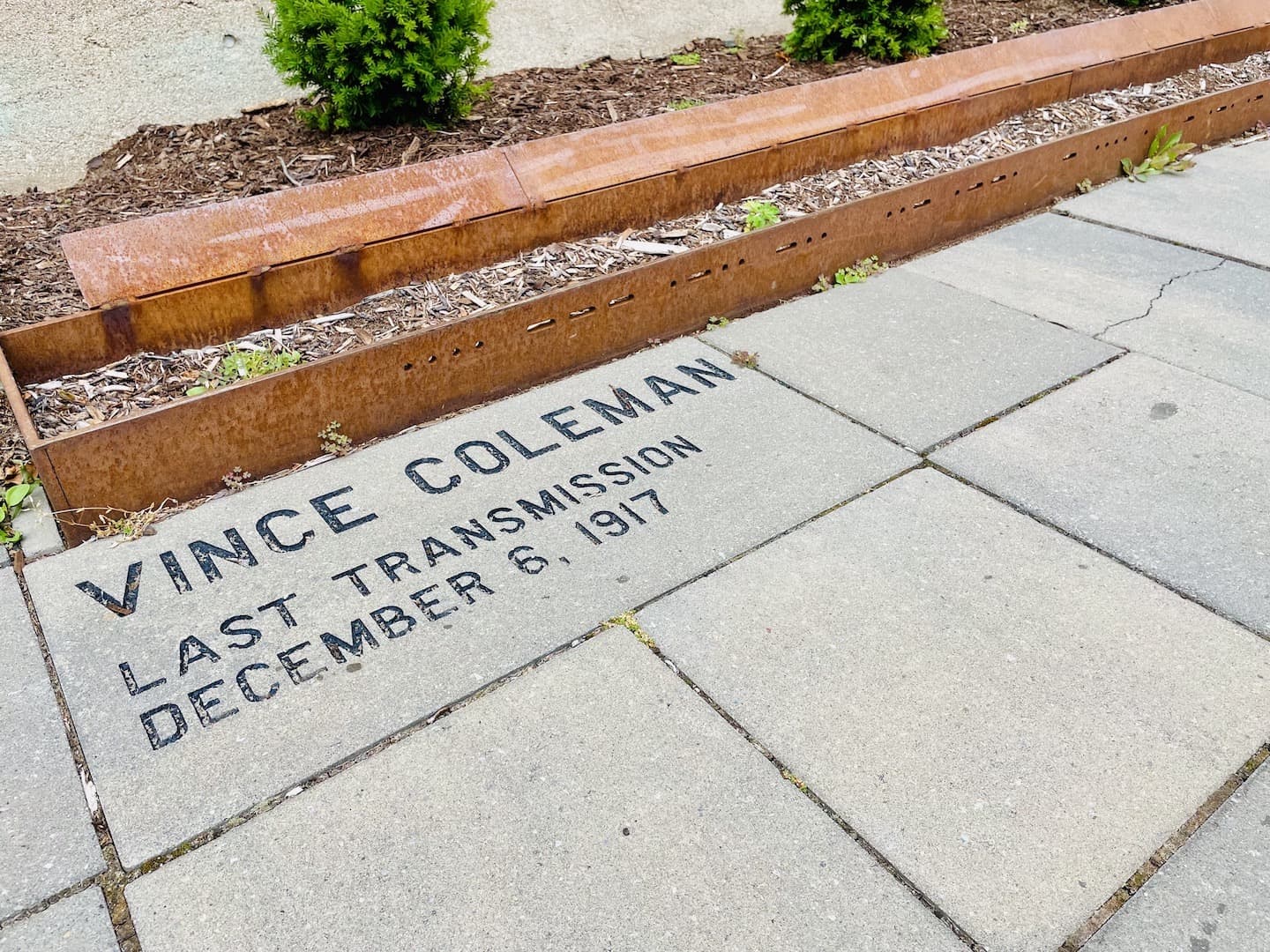
7. Halifax Central Library
5440 Spring Garden Road
Opened in 2014, the Halifax Central Library is a five-story structure with over 120,000 square feet. Outside, the building somewhat resembles a stack of books. Inside, the library welcomes the public in a wide variety of inviting spaces including comfortable seating, workspaces, banks of computers, a children’s play section, and more.

In addition to the expected book collections for the public, there are two Ampersand cafés (on the first and fifth floors), an auditorium, unique workspaces, and an art installation that is comprised of thousands of miniature paintings – each about the size of the library cards used decades ago.
The 5th-floor Ampersand café offers a quiet spot to enjoy a salad, sandwich, or baked treat while taking in the city views. There’s seating inside and outside on the terrace. The library and the 5th-floor café create a welcome respite from sightseeing and the busy waterfront scene.
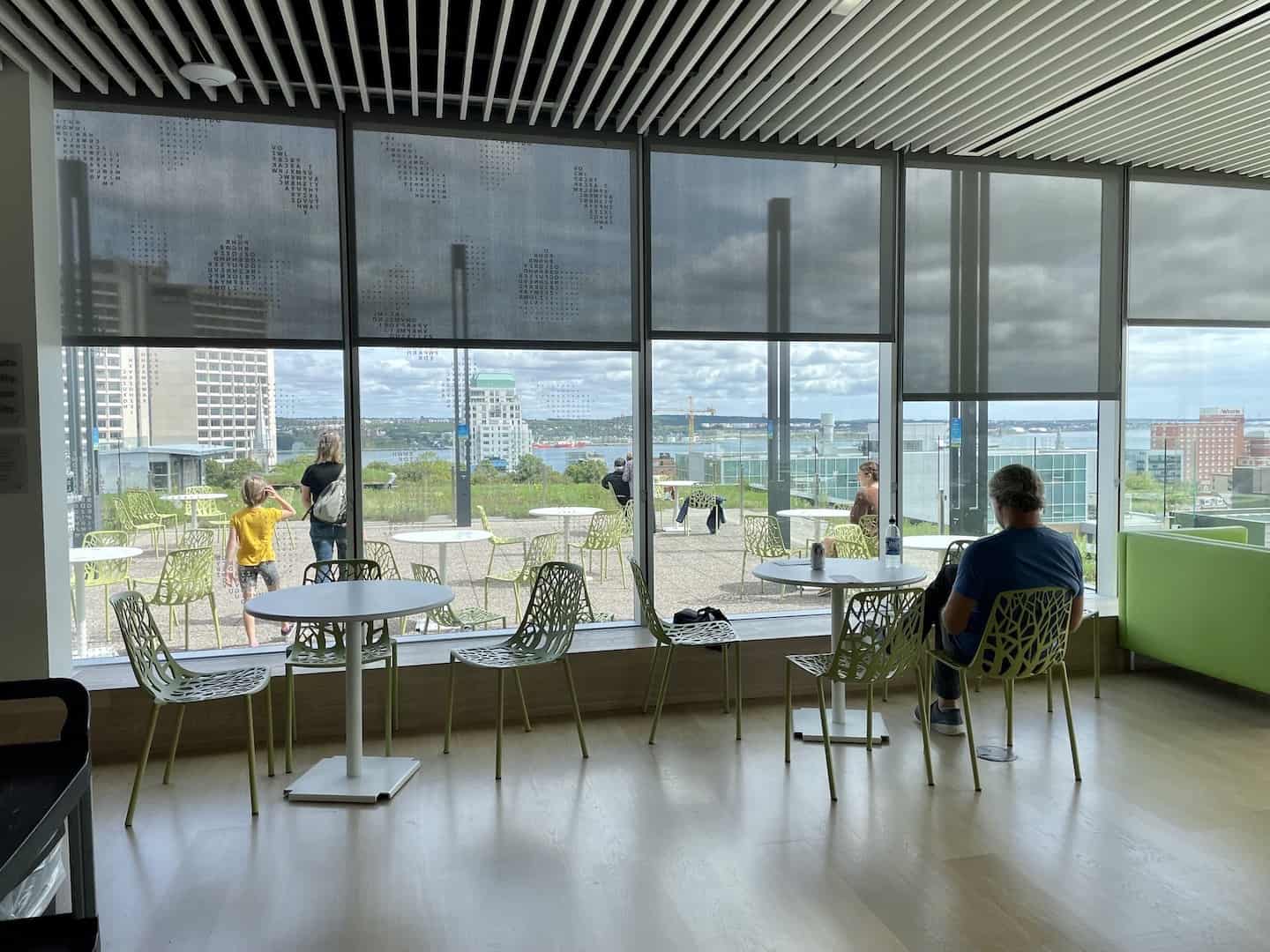
8. Halifax Citadel National Historic Site
5425 Sackville Street | 902-426-5080
The Halifax Citadel National Historic Site is one of the most visited places in Canada. The English established the hilltop star-shaped fort in 1749 with the founding of Halifax. Today’s structure is the fourth iteration and was completed in 1856. There’s an introductory film and a museum in addition to the whole fort to explore. The reproduction 1809 gun is fired at noon daily – in all kinds of weather. (You can view this from outside the fort at no charge. The best place to view it is close to the entrance up the hill.) Soak in the views while walking the ramparts; view the signal post from where coded signals about incoming ships were sent to Halifax residents; the school room where soldiers and their children were educated; and the tunnels used in defense.
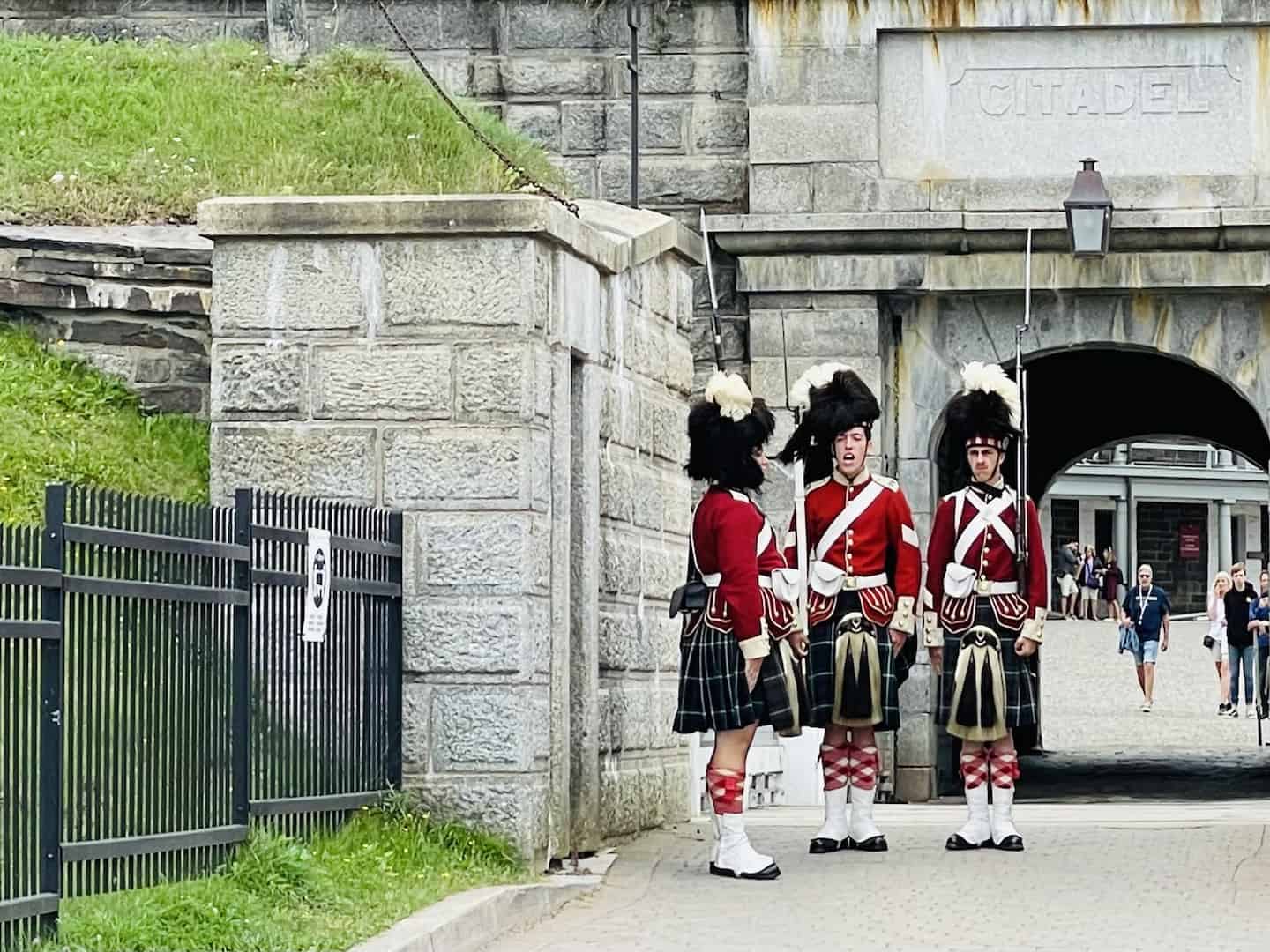
9. Halifax Public Gardens
Spring Garden Road & Summer Street | 902-456-4552
The Halifax Public Gardens encompass 16 acres in downtown Halifax. In addition to the horticultural displays, you’ll find a large pond; elaborate water fountains; wrought iron gates with Halifax’s coat of arms; statues of Roman goddesses including Diana (goddess of the woodland); a bandstand; a picnic area; and a café. Open daily from 8:00 am to a half hour before sunset. Contact the garden to arrange a free historical and horticultural tour.
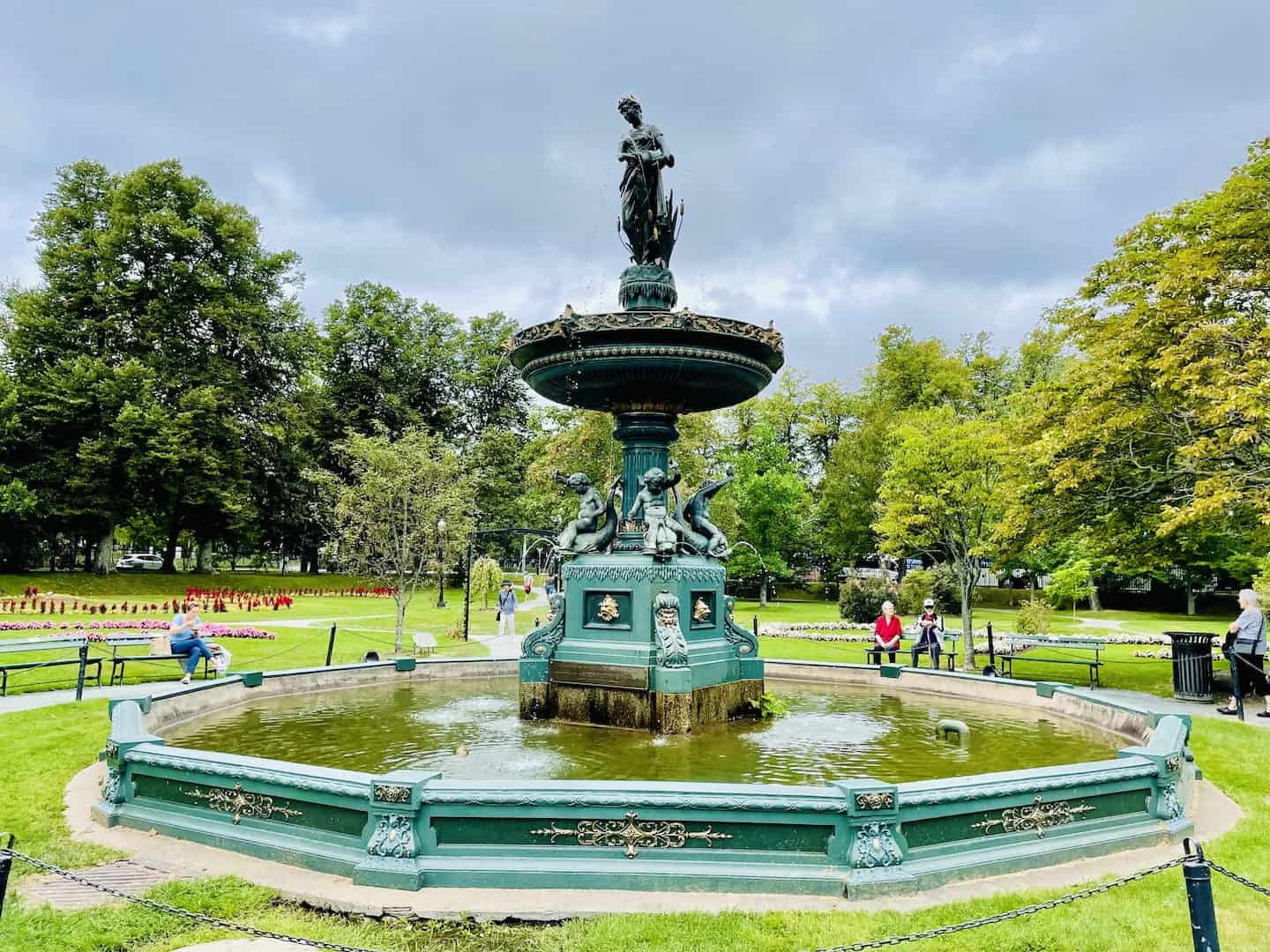
10. Halifax Town Clock
The Halifax Town Clock sits on the east side of the Halifax Citadel and has been keeping time since 1803. The three-story octagonal structure sits on a one-story base. In addition to keeping time, the clock helped signal when the citadel’s soldiers needed to return to the fort from the town’s bars and other places of entertainment (while it was still an active military installation prior to it becoming a national historic site in 1950). Until 1965, the clock tower housed the clock caretaker who maintained and wound the clock. Today the Citadel maintains the clock, winding it every two weeks.
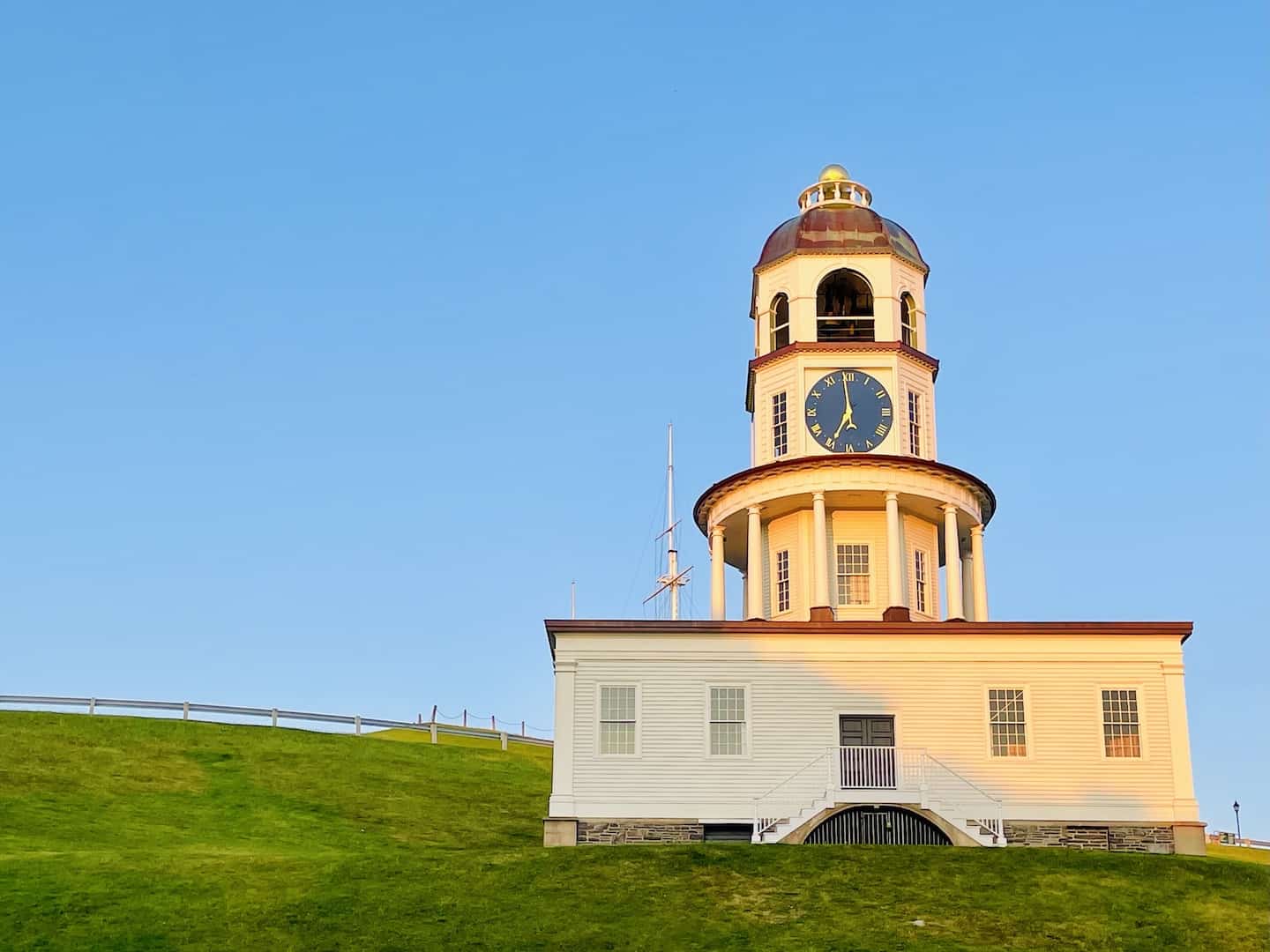
12. Maritime Museum of the Atlantic
Along the Halifax waterfront sits the Maritime Museum of the Atlantic with exhibits, demonstrations, and artifacts that tell the story of the country’s maritime history. That history ranges from small watercraft to the rise of steam engines to modern maritime vessels. In addition, it has exhibits on the Titanic sinking in 1912 and the Halifax Explosion in 1917. When you look at pictures of the explosion in the museum, you’d think you’re looking at the devastation in Hiroshima. Check the museum’s website for special events, including demonstrations of early radio communication technology between ships. The museum is open 7 days a week from May through October. At other times of the year, it’s open Tuesday through Sunday.
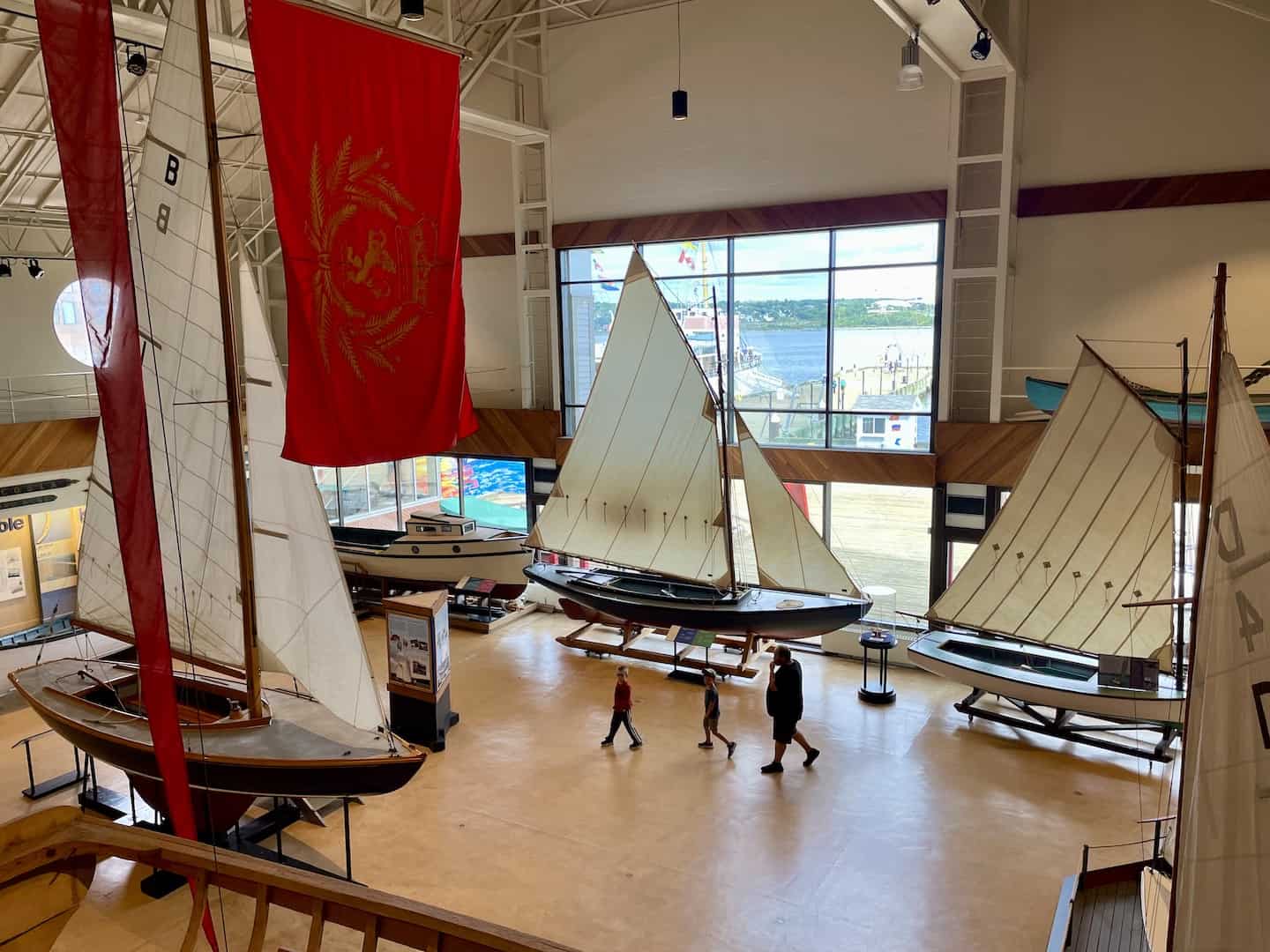
13. Mont Blanc Anchor Shaft Site
110 Spinnaker Drive
The 1,140-pound anchor shaft from the SS Mont Blanc was thrown 2.3 miles/3.7 kilometers away after the Halifax Explosion in December 1917. It’s located on a street corner on the western side of Halifax, north of Sir Sanford Fleming Park.
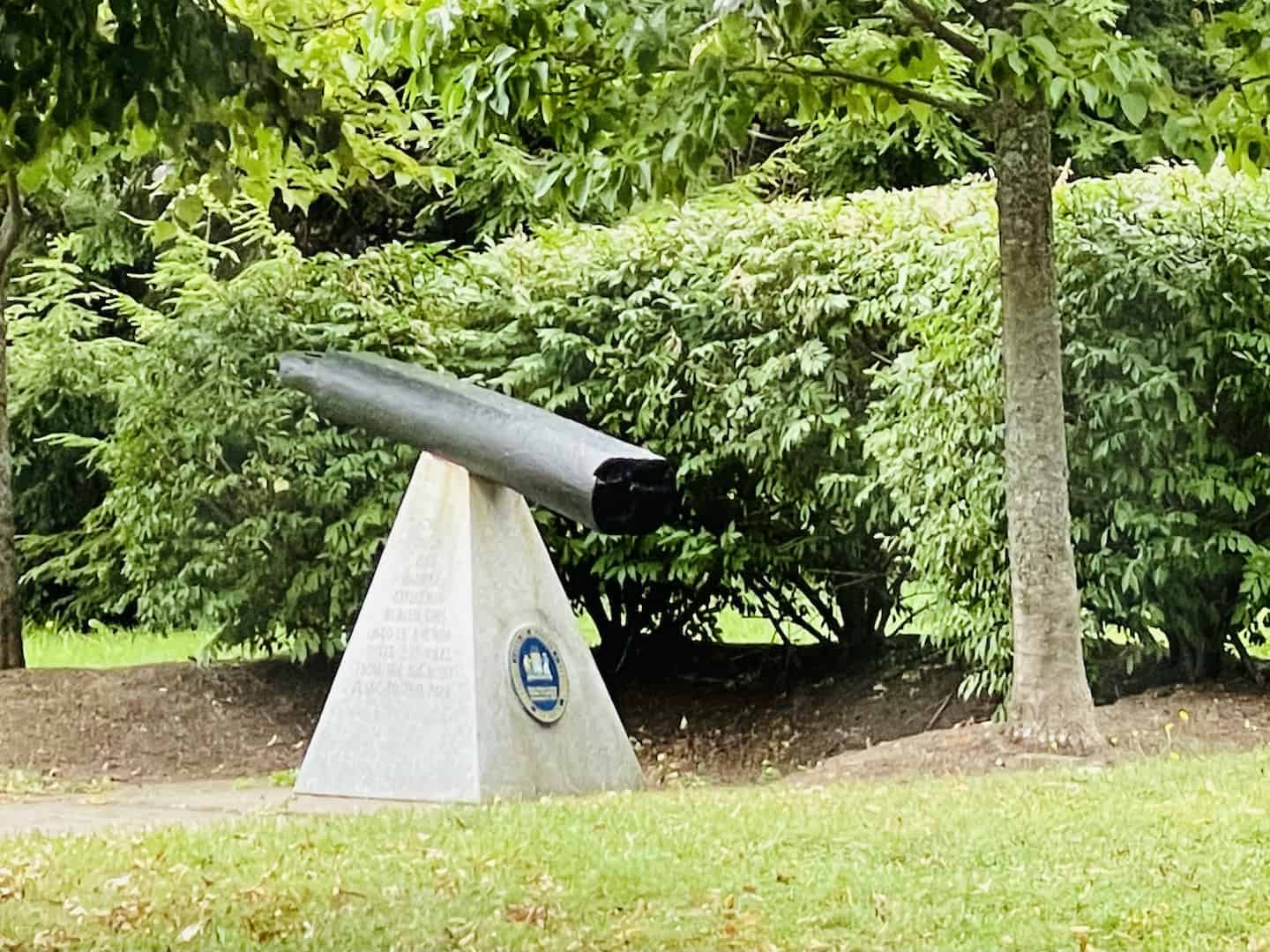
14. Point Pleasant Park
5718 Point Pleasant Drive
Point Pleasant Park is a 185-acre park on the southern tip of the Halifax peninsula. It offers 25 miles/40 kilometers of trails (many paved) and great harbor views. Military defensive historical relics here include the 1796 Prince of Wales Martello Tower and Fort Ogilvie, built in 1862.
14. Sir Sanford Fleming Park
260 Dingle Road | 902-490-4539
Sir Sandford Fleming was a Scottish-Canadian engineer, inventor, and creator of Standard Time Zones,. He donated this waterfront land for a park in 1908. The 95-acre Sir Sanford Fleming Park is well-known for the Dingle Tower, dedicated in 1912 to commemorate 150 years of representative government here. In addition, the park has walking trails, a sandy beach (without a lifeguard), a picnic area, a playground, and a boat launch.
Getting to Halifax
Many visitors fly into Halifax Stanfield International Airport (airport code YHZ) and rent a car or take a cab to the city’s downtown. It’s about a 30-minute drive from the airport to downtown Halifax as the airport is actually 21 miles/34 km outside the city.
When to Visit Halifax
The best time to visit is mid-June through mid-October, when the temperatures are mild. That’s also when most places are open in the city and surrounding areas. Average daytime temperatures (Fahrenheit) in the summer range from the mid-50s to mid-70s. In the winter, expect daytime temperatures in the high-teens to low-30s.
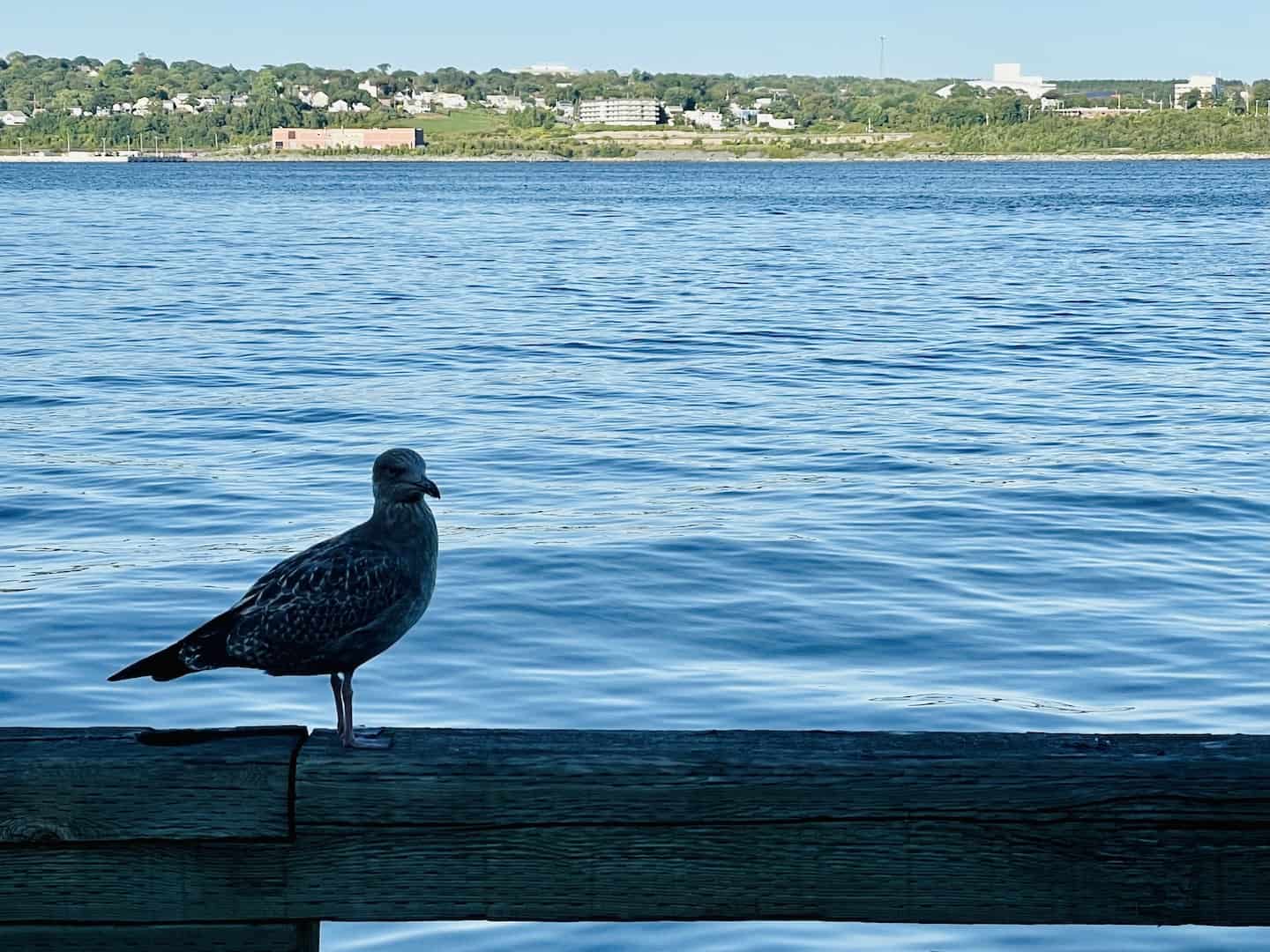
Tips for Visiting Halifax
1. There’s a tourist information office on the waterfront boardwalk that has helpful staff and plenty of brochures to help guide your activities in Halifax and other parts of Nova Scotia.
2. If interested in exploring the maritime history of Halifax including the Titanic Sinking and the Halifax Explosion, make a trip to the Maritime Museum of the Atlantic one of your first stops. The museum has lots of interesting information and artifacts that help to tell the story of the disasters, the people involved, and the lasting effects those two events had on the city.
3. I found that our visit to Halifax involved two distinct areas on either end of a steep hill. First, the major historical sites (including the citadel, the Halifax Explosion Memorial Site), the public library, and the public garden are located up the hill from the waterfront. Second, the boardwalk waterfront is down the hill and is abuzz with activity. Here you’ll find the Historic Properties, the Maritime Museum of the Atlantic, scenic boat rides, and ferries – along with plenty of restaurants, places to stroll, or simply relax on a bench or other outdoor seating.
4. Staying downtown is key to getting to the key sites easily. We found it helpful to stay in a hotel that’s in between the two areas: the major historic sites and the waterfront. So when we wanted to visit the citadel or other places on that level, we headed one way from our hotel. If we preferred to be on the waterfront, we chose the other direction. (We enjoyed our stay at the Prince George Hotel on Market Street. It has comfortable guest rooms, a fitness center, an inside pool, a bar, and a restaurant.)
5. To get a good lay of the land, tour the city. We enjoyed a wonderful small group six-hour historical tour of Halifax.
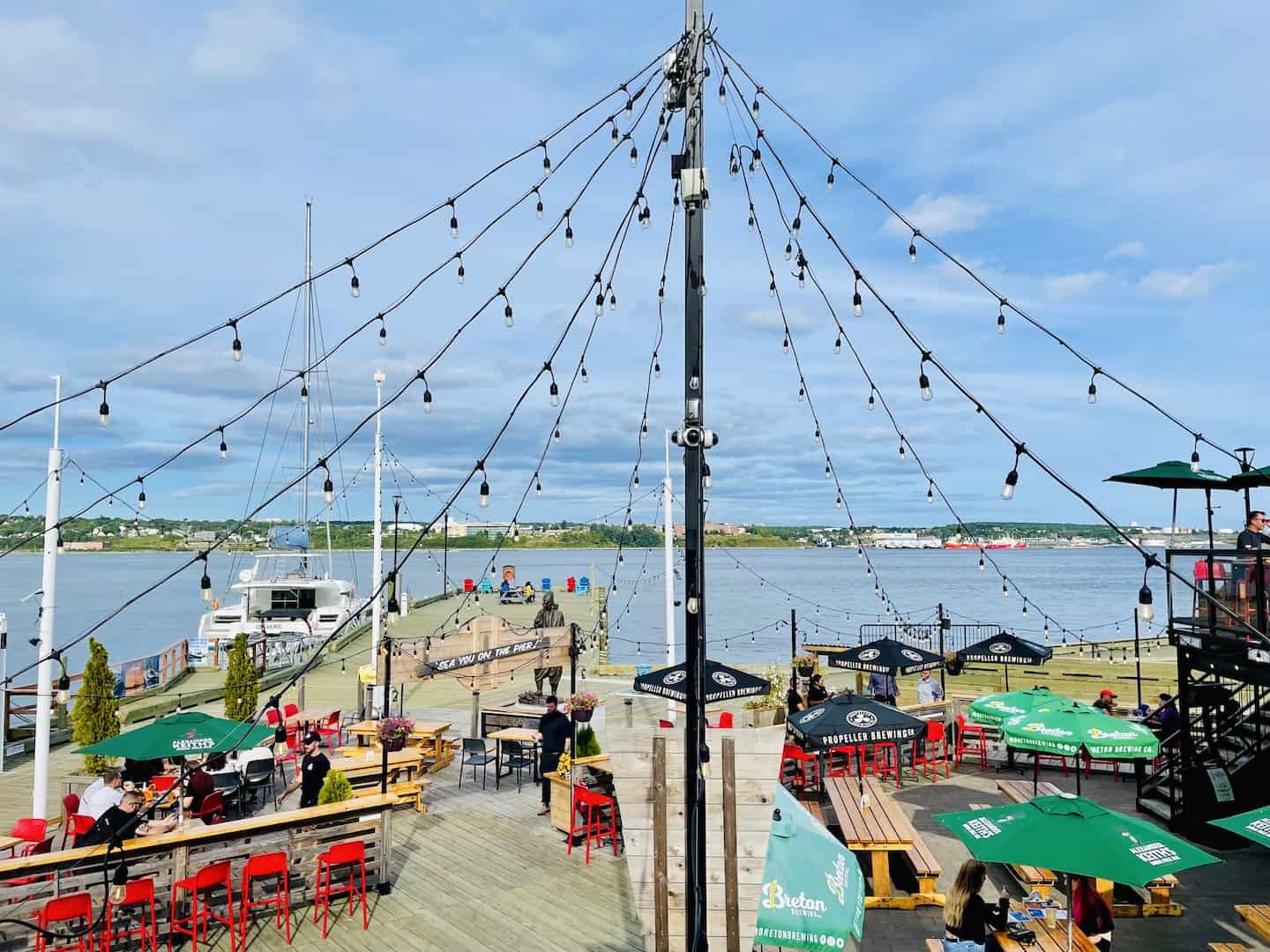
Where to Eat in Halifax
- Ampersand Café in the Halifax Central Library – The fifth-floor cafe serves good salads, soups, sandwiches, and pastries. Beyond that, there’s a rooftop terrace to enjoy great views of the city. Location: 5440 Spring Garden Road
- Arthur’s Urban Market – Although not an eatery, Arthur’s is a great place to pick up some munchies to enjoy in your hotel room. We got some yogurt to eat for breakfast. Eating the first meal of the day in our room gave us more time to get out and enjoy the city. Location: 1591 Hollis Street | 902-422-5538.
- The Beer Garden – This is a super casual eatery serving a variety of beers with water views. Location: 1599 Lower Water Street, Waterfront
- McKelvie’s -. McKelvie’s specializes in seafood (but also has steak, ribs, and vegetarian dishes) with a full bar. Location: 1680 Lower Water Street | 902-421-6161
- Pickford & Black – Choose waterfront outdoor or indoor seating. Although they specialize in seafood, Pickford & Black also offers chicken, steak, and vegetarian options. Location: Historic Properties, 1869 Upper Water Street | 902-406-3474
Related Articles: Canada
- Alberta: An Amazing Canadian Rockies Trip by Luxury Train & Car
- Alberta: Jasper’s Maligne Canyon: Amazing HIkes & Vistas
- Alberta: Johnston Canyon, A Unique & Scenic Canyon Hike in Banff National Park
- Alberta: Lake Agnes, A Unique Hike & Treat in Lake Louise
- Alberta: Parker Ridge Trail, A Great Hike with a Glacial View in the Canadian Rockies
- Alberta: Wonderful Walks & Hikes in the Canadian Rockies
- Nova Scotia: Balancing Rock, A Unique Rock Formation in Nova Scotia
- Nova Scotia: Best Ways to Experience the Phenomenal Bay of Fundy
- Nova Scotia: Five Fabulous Wineries in Nova Scotia
- Nova Scotia: Kejimkujik National Parks, Two Beautiful Oases in Nova Scotia
- Nova Scotia: Tattingstone Inn, A Luxury B&B in Nova Scotia
Related Articles: Trip Planning
- How to Plan a Great Trip
- Stay Powered Up: A Traveler’s Guide to Power Banks
- Travel Lightly: Top Ten Tips to Pack for Your Next Trip
- Travel Planning Timeline
Final Thoughts
When my husband and I were planning our trip to Nova Scotia, we knew that we’d be flying in and out of Halifax as that’s really the only airport option in the province. What we didn’t realize at the time was just how much we were going to enjoy our time here. There are so many great places to visit! That includes digging deeper into the interesting military and maritime history, exploring the public gardens and parks, and just strolling the waterfront boardwalk and relaxing at one of the many great restaurants.
One of the highlights for me was visiting the public library. What a forward-thinking and architecturally interesting space this is – a real gem for the community. If you have the time, treat yourself to lunch, a snack, or a cup of coffee at the Ampersand Café on the library’s fifth floor. Whatever you decide to do during your stay, this beautiful city has plenty to choose from!
Comments?
Feel free to share your thoughts and experiences from a visit to Halifax. Your comments could help other travelers. 🙂


